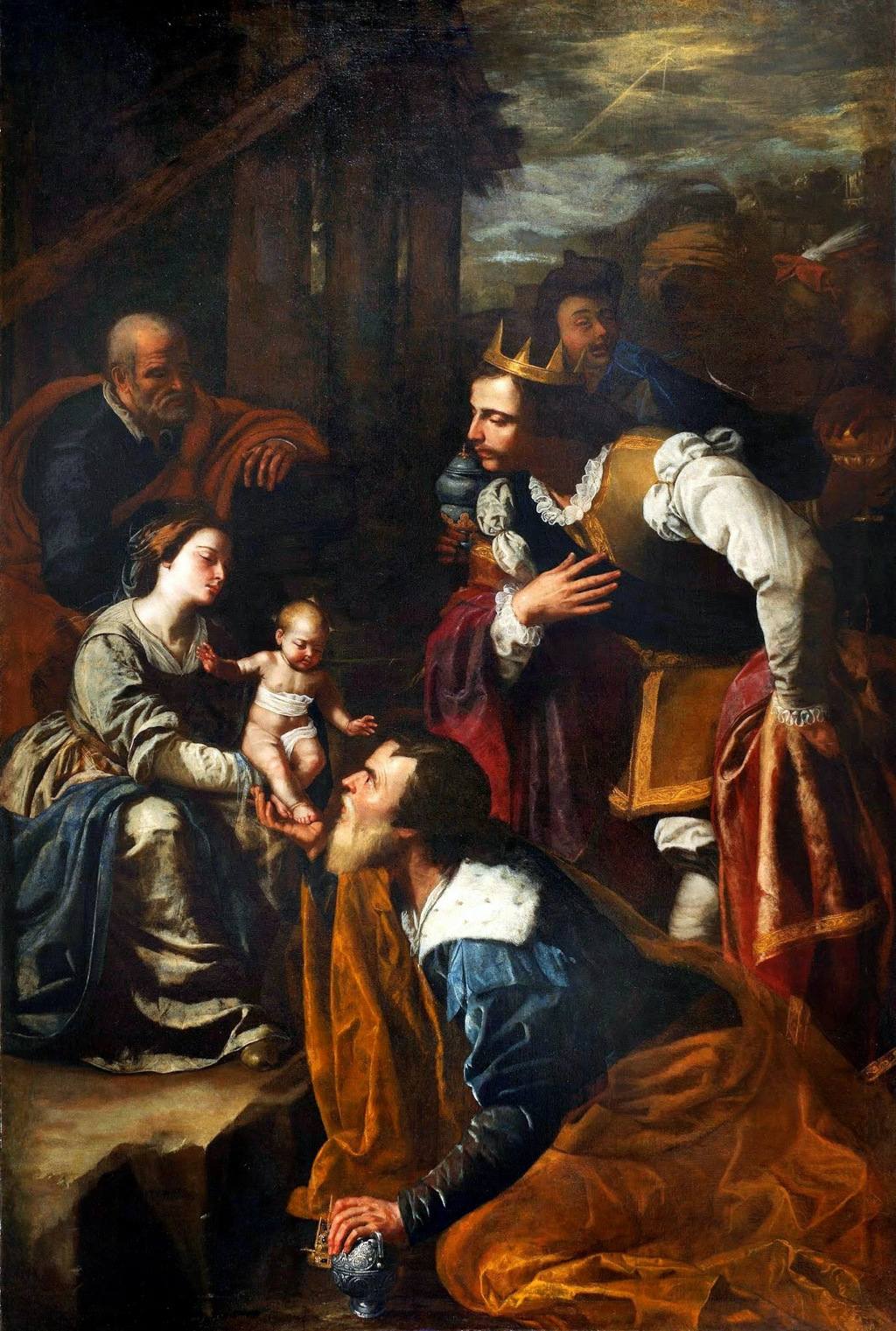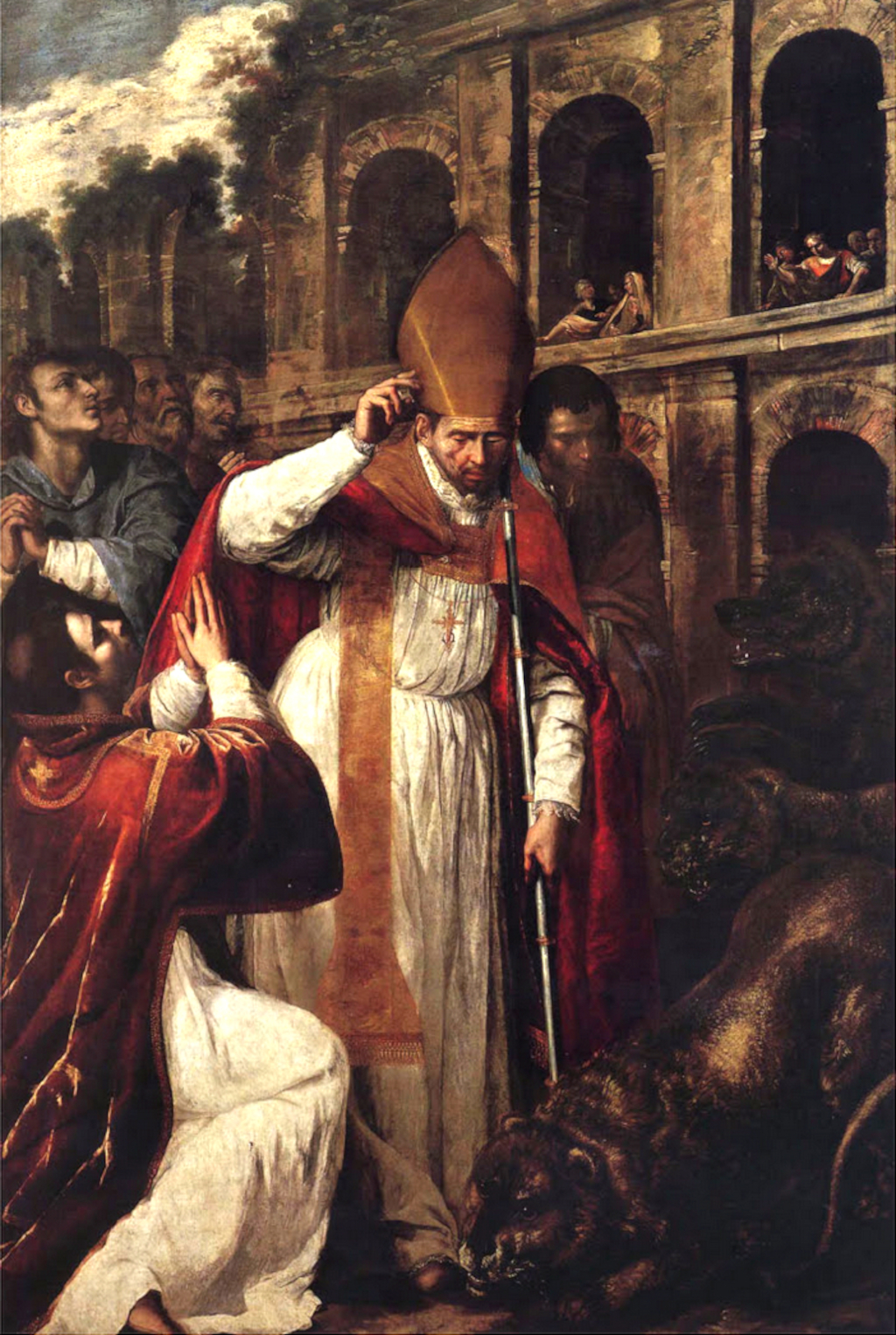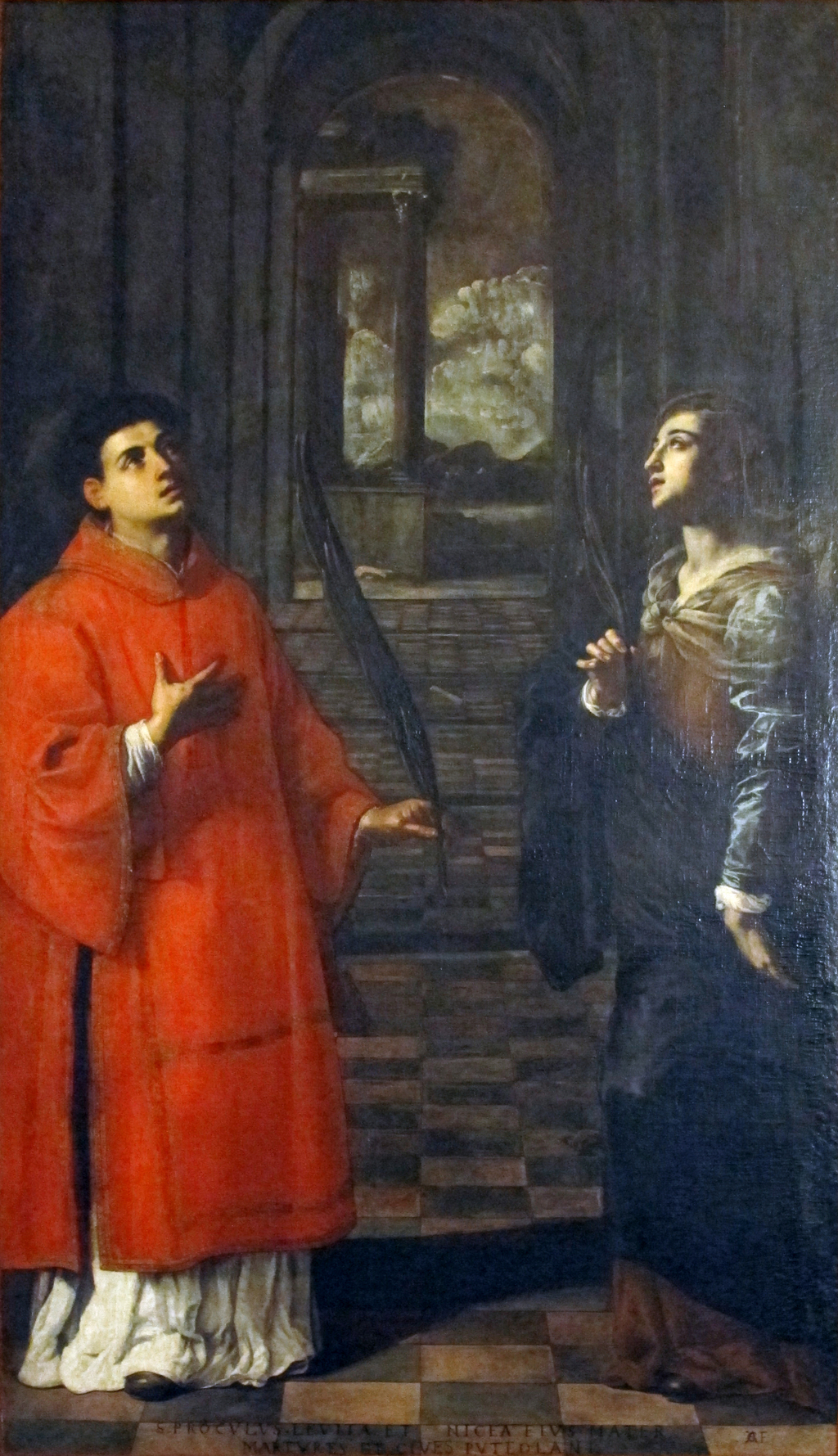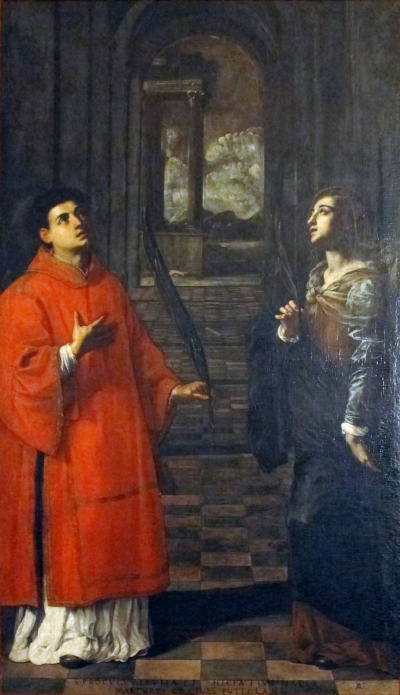Saints Proculus and Nicea was part of a three-painting commission given to Artemisia Gentileschi in the 1630s. The other artworks produced were Adoration of the Magi and Saint Januarius in the Amphitheatre at Pozzuoli.
Introduction
Some of the artist's greatest achievements were made during her time living in Naples. Religious themes often appeared in her oeuvre, normally as a result of specifically requested commissions. Some of these would also be particularly large, as they were intended to be hung within huge open spaces, and potentially viewed from a considerable distance.
During a considerable renovation project within a Naples cathedral, it was decided that as part of the overall project, a number of paintings would be produced to brighten up the area around where the choir were located. Artemisia was sensibly chosen to produce all three works, ensuring a consistency across the paintings. She wa a well established artist by this point, becoming perhaps the most famous female artist in Europe during the first half of the 17th century.
Commission
Martín de León Cárdenas commissioned this series of three paintings to be completed by Artemisia Gentileschi, with each piece destined to be hung close to the choir of Pozzuoli Cathedral, for whom these paintings were dedicated. The works have remained there ever since, other than for a period in Naples during which considerable restoration work was completed.
A number of Artemisia's friend and connections in the art world also knew members of the cathedral, and worked on her behalf to put her name forward for this important commission. This influence proved crucial, and she awarded the work, and this process was entirely typical of the route by which most artists acquired the high profile commissions during both the Renaissance and Baroque eras, particularly within Italy.
 Adoration of the Magi
Adoration of the Magi
 Saint Januarius in the Amphitheatre at Pozzuoli
Saint Januarius in the Amphitheatre at Pozzuoli
Description
The scene captures both saints looking directly upwards. They are placed on opposing sides of this narrow canvas, with a tiled floor running through the centre of the composition. It leads up to a low wall, with an opening above that reveals a cloudy sky in the far distance. Above their heads is considerable detail within the room itself, indicating that they are in a place pf worship, just as the painting would be upon its unveiling within the cathedral.
Nicea, on the right, was Proculus' mother. He is placed on the left in traditional red clothing, indicating his position as a deacon. The two were martyred during the persecutions of 249 AD, a period which inspired several paintings by Artemisia Gentileschi. There is something comforting about seeing the two, mother and son, brought together once more within this painting, having suffered such a brutal fate nearly two thousand years ago.
Size, Medium and Location
Artemisia Gentileschi's Saints Proculus and Nicea measures 300 cm in height, by 180 cm in width. It was produced using oil on canvas, which was entirely typical of this artist, and all three items from this important commission remain at the Cathedral in Pozzuoli, Naples, Italy.
Large Image of Saints Proculus and Nicea
This huge painting by Artemisia Gentileschi is better served by the larger image included below. This was a large undertaking for her, with considerable detail added to the two figures, as well as the supporting elements across the background. The use of perspective and internal architecture was unusual for this artist, making the piece particularly important within her oeuvre.
 Saints Proculus and Nicea
Saints Proculus and Nicea




